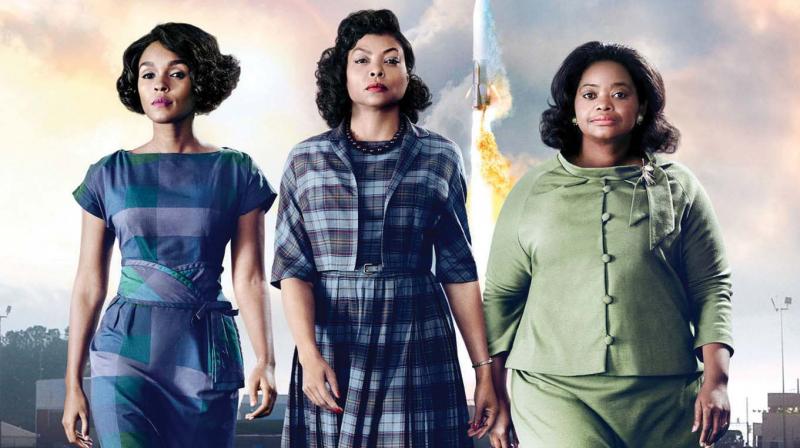Hidden Figures movie review: We all pee the same colour
It is a very close approximation of the three lives in the space and time that cinema as a medium works with.

Cast: Taraji P. Henson, Octavia Spencer, Janelle Monae, Kevin Costner
Director: Theodore Melfi
History is perceived in flashpoints, a string of victories or failures, which help us to construct a linear narrative to this day, to feel safe and to belong to a particular side of the story. Factual history does not seem to allow an entry point for the observer and therefore it becomes an exercise devoid of compassion and empathy. Hidden Figures is, on the contrary, a compassionate, empathetic and nuanced version of the recent American history. Every moment in this film is like a frame in an exhibition, frames that let us see the art, but also the canvas, the mediums, the textures and the smudges. In the first five minutes of the film our protagonists — three black women — are stranded on a highway because of the car breakdown. The policeman who approaches them cannot believe the fact that these black women work at Nasa. In that moment alone, through the disbelief of the policeman, century’s worth of history is narrated.
The world was really black and white in those days, not just in the photographic medium. While the film has brief interludes of the civil rights movement, it does not belong on the streets, it belongs inside. It is the inside of institutions, parks, and churches and inside people where the revolution is really taking shape. What we see on the street is just a symptom. Behind closed doors, in the hallways and in the recesses where coffee too becomes black and white one wonders how they lived through it, not just the oppressed, but the oppressor too. Octavia Spencer who plays Dorothy Vaughn, a computer at Nasa is the true spirit of rebellion. She enters a library and steals a book from the white section, because she cannot find the book she needs in the coloured section. She does this with her kids who need an explanation about why she stole it. It was a book about FORTRAN, the computer language she wants to learn so she does not loose her job as the computer, now that the real computer is there.
Janelle Monae who plays Mary Jackson files a petition, pleads her case and wins the right to attend classes at the night school for an advanced degree simply to apply for the engineer’s position, while the people she works with are already looking up to her. In this fight there is no visible enemy so whom do you scream on? Taraji P. Henson plays Katherine, a widow with three children, she is one of the best minds at Nasa, but she isn’t fighting for glory, she is just trying to make ends meet, while figuring out some of the most complicated mathematics and assuring on the go-no-go protocols. There seems to be no other way the film could have been made, no other way the story could have been told to evoke a better response. It is not designed to give you a feeling of euphoria in the end with a crescendo, it is not meant to evoke joy. It is a very close approximation of the three lives in the space and time that cinema as a medium works with. If there is one thing that I take away from this film, it is the spirit of living, of survival, of breathing because it is important.
The writer is founder, Lightcube Film Society

